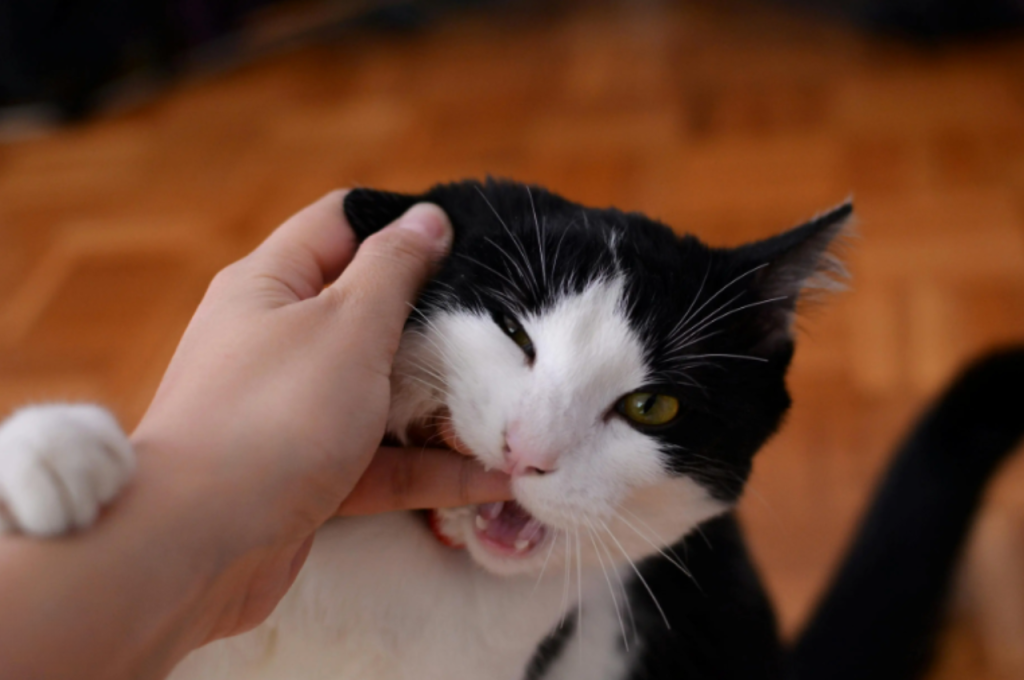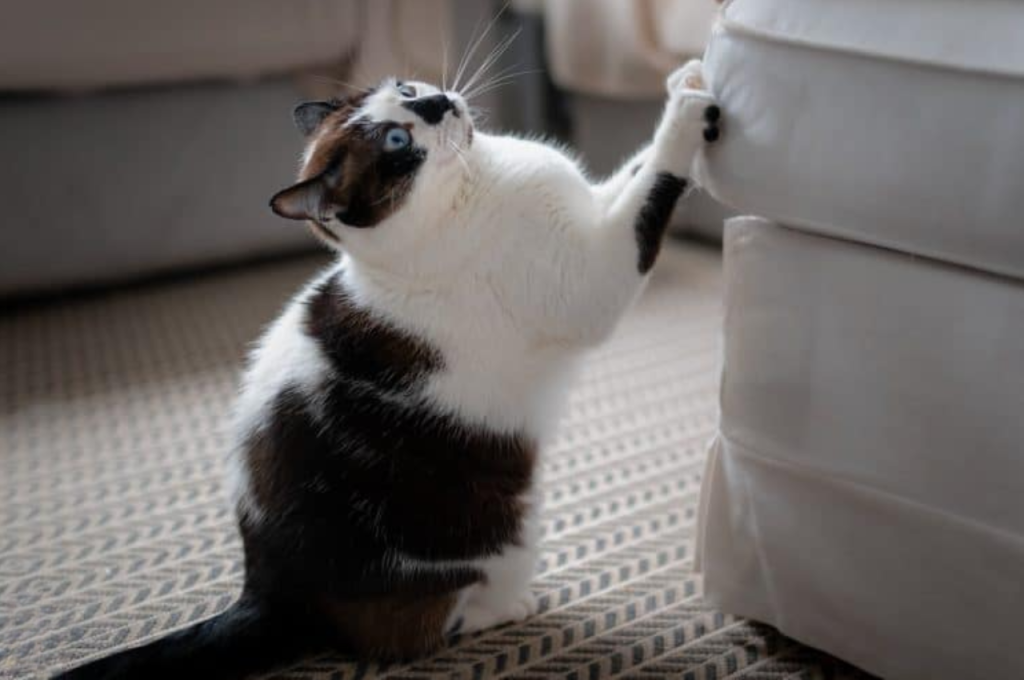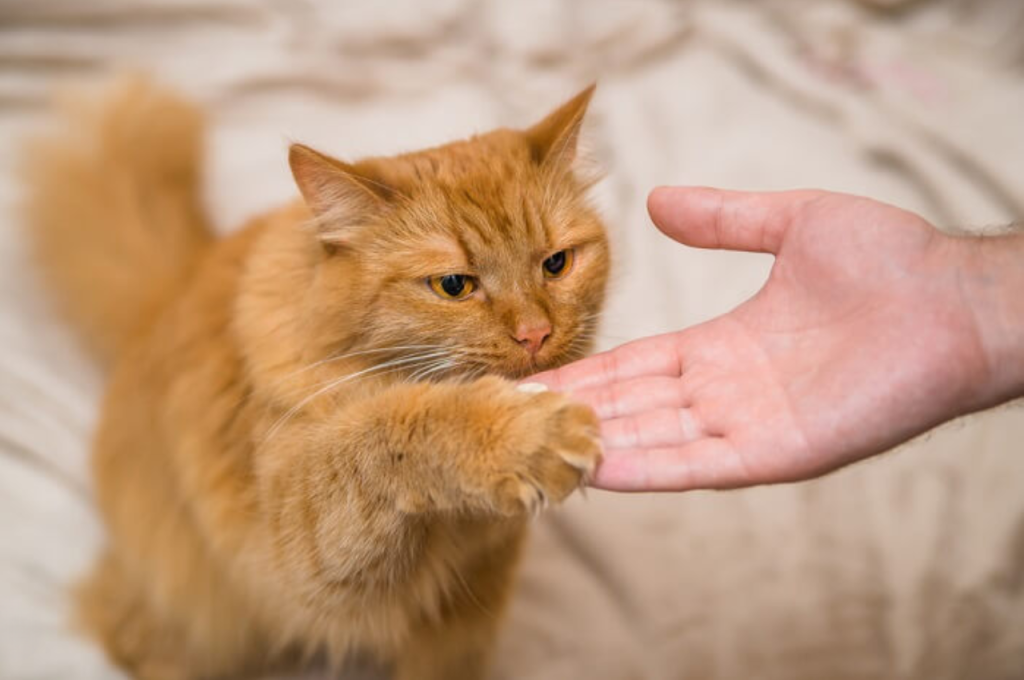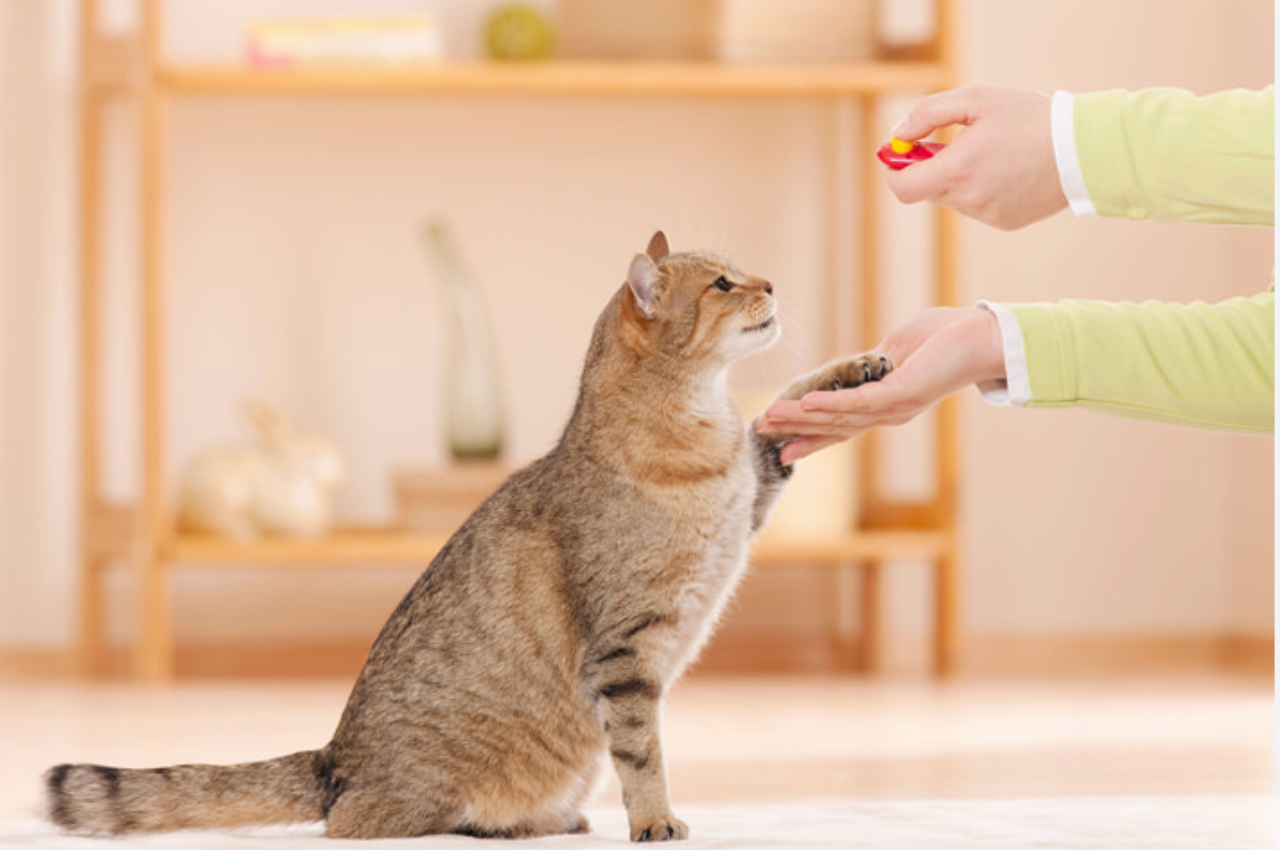Disciplining cats involves positive reinforcement and redirection. Use verbal commands in a firm, authoritative voice and reward good behavior with treats and affection.
Cats are independent creatures with their personalities and preferences. Training and disciplining them can be a challenge if not done correctly. While cats are not inherently disobedient, their behavior can sometimes be a nuisance or even destructive. It is important to establish rules and boundaries for them, but discipline should always be done positively and humanely.
Some effective methods for disciplining cats include using verbal commands, redirecting their attention, and rewarding good behavior with treats and affection. With patience and consistency, cats can learn to behave appropriately and become delightful companions.
Why Discipline is Important for Cats
Disciplining a cat is important to maintain obedience and prevent destructive behavior. Positive reinforcement is most effective, using treats and praise to reward good behavior and discouraging bad behavior with firm but gentle correction. Consistency is key to successfully disciplining a cat.

As a pet parent, disciplining your cat is an essential aspect of responsible cat ownership. Discipline helps your cat to develop good behavior and habits, improves their mental and physical health, and promotes a happy and healthy relationship between you and your feline friend. In this post, we will discuss the importance of disciplining your cat and provide some tips on how to discipline your cat effectively.
Understanding Cat Behavior
To discipline your cat effectively, it is important to understand their behavior. Cats are naturally curious and independent animals, which can make them challenging to train. However, with patience, consistency, and positive reinforcement, training your cat can lead to good behavior and habits.
The Negative Effects of Not Disciplining Your Cat
Not disciplining your cat can lead to negative consequences, such as destructive behavior, aggression, and health issues. A cat that is not disciplined may scratch furniture, carpeting, and curtains, damage plants, and knock over valuable items.
A cat that is not trained may become aggressive towards humans, other pets, and wildlife, leading to injuries and legal liabilities. Furthermore, a cat that is not disciplined may develop obesity, urinary tract infections, and other health issues due to lack of exercise and a poor diet.
Positive Reinforcement Techniques
Disciplining a cat requires positive reinforcement techniques. Cats respond well to treats, toys, and praise. It’s important to never use physical punishment as it can damage your relationship with your feline friend.
Reward-based Training
Positive reinforcement training is an effective method to discipline your cat without causing any harm. In this method, you acknowledge and reward good behavior with treats, rather than punishing bad behavior. This technique involves encouraging your cat to behave the way you want them to, rather than discouraging them from doing something wrong.
Clicker Training
Clicker training is a form of reward-based training that involves using a small device that makes a clicking sound. The clicking sound is a substitute for treats and is used to reward good behavior. The sound of the clicker marks the exact moment your cat performs a desired behavior, making it easier to reinforce it positively. Using a clicker can help your cat associate the sound with a positive experience, which can lead to quicker learning. Start by clicking the device when your cat does something you want him/her to do, such as coming to you when called. Then reward your cat with a treat immediately after clicking.
Using Treats Effectively
Treats are an essential part of positive reinforcement training and can be used effectively to encourage your cat’s good behavior. However, using treats correctly is crucial to avoid overfeeding your cat and causing weight gain. Use small, soft treats that your cat can swallow quickly and that won’t create a choking hazard. Reward your cat immediately after performing good behavior, as this will help your cat understand the connection between the good behavior and the reward. Incorporating positive reinforcement techniques such as reward-based training, clicker training, and using treats effectively can help discipline your cat without causing any harm. These methods are safe, and effective, and can strengthen the bond between you and your feline friend.
Correction Techniques
To discipline a cat, positive reinforcement correction techniques work best. Avoid punishment – it’s not effective and only creates stress, fear, and aggression in cats. Instead, reward good behavior with treats and playtime.
Cats are known for their independent nature, but that doesn’t mean they don’t need discipline. It’s important to correct your cat’s negative behavior to establish a good relationship with them. There are several different correction techniques that you can use to discipline your cat. Below we’ll cover Verbal Corrections, Using a Water Spray Bottle, and Creating Physical Barriers in detail, so you can find the technique that works best for you.
Verbal Corrections
One of the easiest and most effective ways to discipline your cat is through verbal corrections. Cats are intelligent animals and can understand scolding. When your cat is doing something bad, use a firm and loud voice to tell them “No” or “Stop”. Be consistent and use the same word each time your cat misbehaves. Also, make sure to use a clear tone to avoid confusing them. Positive affirmation should also be used when your cat does something right to encourage positive behavior.
Using A Water Spray Bottle
If your cat continues to repeat bad behavior, using a water spray bottle can help correct the issue. Fill a clean water spray bottle with water and a splash of vinegar. When your cat is engaging in undesirable behavior, spray them with the mixture. This unpleasant sensation will deter the cat from repeating the action. However, do not use this too frequently, as it can cause fear and anxiety in your cat.
Creating Physical Barriers
Another way to discipline your cat is by creating physical barriers. If there is a specific area or object in your home that you want your cat to avoid, use physical barriers such as baby gates or closed doors. This will prevent your cat from accessing the specific area. Use positive reinforcement when your cat follows your instructions and avoids the restricted area.
Common Discipline Scenarios
Disciplining a cat is possible through understanding common scenarios such as scratching, biting, and meowing. It’s important to redirect negative behavior, use positive reinforcement, and keep a consistent routine to avoid the need for punishment.

Disciplining a cat can be a tricky task. Cats are known for their independent and stubborn nature, which makes it harder for pet owners to train and discipline them. However, it is essential to teach your feline friend how to behave around others and engage in adequate manners. In this post, we will discuss some common discipline scenarios cat owners encounter and how to handle each one.
Scratching Furniture
Cats have a natural tendency to scratch, which can damage your furniture, carpets, and drapes. To discourage your cat from scratching your items, provide them with a scratching post and reward them when they use it. If you catch your cat scratching your belongings, clap loudly or use a squirt bottle to distract them, but never hit or yell at your cat.
Biting and Clawing
Biting and clawing are common discipline scenarios that pet owners face with their cats. If your cat has a habit of biting and clawing, avoid rough play and redirect their attention with a toy or treats. If your cat bites you, show assertiveness by saying “no” and gently pushing them away. Understand, never hit or yell at your cat as it can lead to increased aggression.
Aggression Towards People or Animals
Aggressive behavior in cats is usually triggered by fear, anxiety, or stress. If your cat shows aggression towards people or animals, determine the source of fear, and remove or avoid the triggers. Provide your cat with a safe space where they can retreat and relax when stressed. If your cat continues to exhibit aggressive behavior, consult with a veterinarian to determine if there is an underlying medical condition and identify the best course of action. In conclusion, disciplining a cat requires patience, consistency, and positive reinforcement. Punishing or using physical force can lead to increased aggression and mistrust towards pet owners. Hence, use positive reinforcement, treats, and toys to train your feline friends and provide them with a healthy and happy environment.
Mistakes to Avoid
If you want to discipline your cat, there are important mistakes to avoid. Firstly, never punish your cat physically. Secondly, do not attempt to discipline them by shouting or using negative reinforcement. Instead, focus on positive reinforcement and patience in training them with toys and treats.
As a cat owner, disciplining your feline friend might be necessary to prevent destructive behavior or ensure their safety. However, there are several common mistakes pet owners make when it comes to discipline, which can make the situation worse or cause harm to the cat. Here are some common errors to avoid when trying to discipline your cat.
Punishing Your Cat
One of the biggest mistakes people make when disciplining their cats is punishing them in a way that is likely to cause physical or emotional harm. Physical punishment, such as hitting or spanking, can lead to fear, aggression, and other behavioral problems in cats. Additionally, verbal punishment, such as shouting or scolding them for something they did wrong, can make the cat feel anxious or stressed and may not solve the problem.
Instead of punishment, a better approach is to redirect your cat’s behavior with positive reinforcement. This can include providing them with an alternative acceptable behavior, such as scratching on a scratching post rather than the furniture, and rewarding them when they follow through with the desired behavior.
Disciplining at the Wrong Time
Disciplining your cat at the wrong time can also be counterproductive. It is important to ensure that you do not discipline them when they are not engaged in undesirable behavior, as they will not understand why they are being punished. For example, yelling at your cat for scratching the couch while they are sitting in their bed would not help to correct the behavior. To be effective, discipline should be immediate and consistent. For example, if your cat is jumping on the counter, gently remove them and say “no” firmly. Be consistent with this approach every time they jump on the counter, and they will soon develop a habit of not doing it.
Inconsistent Discipline
Another mistake people make when disciplining their cat is inconsistency. If you let your cat do something one day but not another, they will not understand why it is acceptable some days and not others. It is important to stick to a consistent approach to ensure your cat understands what is expected of them. Consistent discipline can also be reinforced by positive reinforcement. For example, if your cat scratches their scratching post instead of the couch, give them a treat or praise them to reinforce this behavior positively.
Training vs. Discipline
Training and discipline are two entirely different things for cats. To discipline a cat, use positive reinforcement by rewarding good behavior and ignoring or redirecting bad behaviors. Consistency and patience are key in the training process.
Understanding the Difference
Discipline and training are often used interchangeably when it comes to pet behavior modification. However, it is essential to understand the difference between these two approaches for effective cat training. Training involves teaching your cat desirable behaviors, while discipline involves eliminating undesirable behaviors.
The Role of Training in Discipline
Training plays a vital role in successful cat discipline. Before disciplining your cat for bad behavior, it is important to teach them the desired behavior. Positive reinforcement techniques such as treats and praise can be used to encourage good behavior. Training also helps establish a bond between you and your cat, making it easier to communicate and discipline them effectively. When disciplining your cat, it is important to avoid using physical punishment or negative reinforcement techniques such as yelling or hitting. These techniques can be ineffective and can damage your relationship with your cat. Instead, use positive reinforcement techniques, such as rewarding good behavior and ignoring or redirecting bad behavior.
To discipline your cat effectively, it is essential to understand the reason behind their behavior. Cats may display bad behavior due to a variety of reasons, such as boredom, anxiety, or fear. By identifying the underlying cause of the behavior, you can address the root cause and prevent the behavior from recurring in the future.
The Importance of Patience and Persistence
Disciplining a cat requires patience and persistence. It may take time for a cat to learn and understand the rules, but with consistency and positive reinforcement, they can learn to behave as desired. Rewarding good behavior and redirecting unwanted behavior can help build a strong and positive relationship with your furry friend.

Disciplining a cat can be a challenging task. It takes time, patience, and persistence to train your feline friend. You need to understand that cats have their personalities, and not all cats respond to discipline in the same way. However, with the right approach and mindset, you can make significant progress in training your cat. In this blog post, we’ll discuss the importance of patience and persistence when it comes to disciplining your cat.
Disciplining Takes Time
Training a cat takes time. You cannot expect your cat to change its behavior overnight. It requires consistent efforts and a strong commitment to training regularly. For instance, if you want to prevent your cat from scratching the furniture, you need to teach it alternatives like scratching posts or pads. You’ll need to encourage your cat to use them instead of the furniture, which means rewarding your cat each time it uses the post or pad. This process won’t happen in a few days. You need to be patient and persistent and train your cat continually.
Expecting Setbacks
Disciplining your cat can be an unpredictable process. Even when you’re making progress, there may be setbacks. For instance, your cat may start using the furniture to scratch again after a few days of using the scratching post regularly. Such setbacks can be frustrating, but it’s essential to stay patient and persistent. You need to understand that this is part of the training process. Instead of giving up or punishing your cat, you need to continue training.
Disciplining a cat requires time and patience. You need to be consistent and persistent, even when faced with setbacks. Remember that your cat’s behavior won’t change overnight, but with consistent training, you can make significant progress. Keep rewarding your cat for positive behavior, and avoid punishing them for negative behavior. With time, you’ll have a disciplined and well-behaved cat.
Conclusion
Disciplining a cat can seem daunting, but with patience, consistency, and positive reinforcement, it can be achieved. By redirecting their behavior, using deterrents, and providing appropriate outlets for their energy, you can build a healthy relationship with your furry friend.
Remember to avoid physically punishing them as it can have negative effects on their behavior and mental health. Keep in mind that every cat is different, and what works for one may not work for another, so don’t be afraid to experiment and find what works best for your feline companion.
